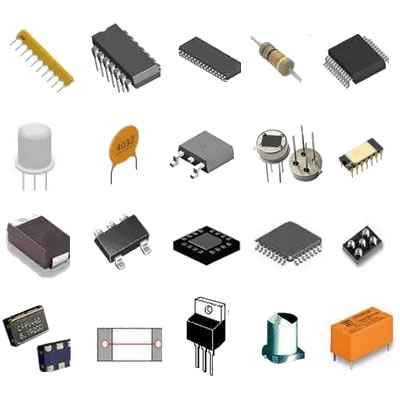When Will the New Ceramic Resistors Be Released?
I. Introduction
Ceramic resistors are essential components in the world of electronics, playing a crucial role in regulating current and voltage in various applications. These resistors are made from ceramic materials, which provide unique properties that make them suitable for high-performance environments. As technology continues to advance, the demand for more efficient and reliable components grows, leading to the development of new ceramic resistors. This article aims to inform readers about the anticipated release of these new ceramic resistors, exploring their features, market trends, and the implications of their introduction.
II. Overview of Ceramic Resistors
A. Composition and Manufacturing Process
Ceramic resistors are primarily composed of a mixture of ceramic materials, such as metal oxides, which are then processed to create a resistive element. The manufacturing process typically involves the following steps:
1. **Materials Used**: Common materials include ruthenium oxide for thick film resistors and tantalum nitride for thin film resistors. These materials are chosen for their stability and performance under varying conditions.
2. **Production Techniques**: The production of ceramic resistors can be categorized into thick film and thin film techniques. Thick film resistors are created by screen printing a resistive paste onto a ceramic substrate, while thin film resistors are produced by depositing a thin layer of resistive material onto a substrate through vacuum deposition techniques.
B. Types of Ceramic Resistors
Ceramic resistors can be classified into several types, each serving different applications:
1. **Thick Film Resistors**: These are widely used due to their cost-effectiveness and versatility. They are suitable for applications requiring moderate precision.
2. **Thin Film Resistors**: Known for their high accuracy and stability, thin film resistors are often used in precision applications, such as medical devices and aerospace technology.
3. **Specialty Ceramic Resistors**: These include high-voltage and high-power resistors designed for specific applications, such as power electronics and telecommunications.
C. Advantages of Ceramic Resistors
Ceramic resistors offer several advantages that make them a preferred choice in many electronic applications:
1. **High-Temperature Stability**: They can operate effectively in high-temperature environments, making them ideal for automotive and industrial applications.
2. **Low Noise Characteristics**: Ceramic resistors produce minimal electrical noise, which is crucial for sensitive electronic circuits.
3. **Durability and Reliability**: Their robust construction ensures long-term performance, even in harsh conditions.
III. Current Market Trends
A. Demand for Ceramic Resistors in Various Industries
The demand for ceramic resistors is on the rise across multiple industries:
1. **Automotive**: With the increasing complexity of automotive electronics, there is a growing need for reliable components that can withstand extreme conditions.
2. **Consumer Electronics**: As devices become more compact and powerful, the demand for high-performance resistors continues to grow.
3. **Industrial Applications**: Industries such as telecommunications and power generation require durable and efficient resistors for their operations.
B. Technological Advancements Driving the Market
Several technological advancements are influencing the market for ceramic resistors:
1. **Miniaturization of Electronic Components**: As devices become smaller, the need for compact and efficient resistors has increased.
2. **Increased Power Handling Capabilities**: New materials and manufacturing techniques are enabling resistors to handle higher power levels, expanding their application range.
C. Competitive Landscape
The market for ceramic resistors is competitive, with several key manufacturers leading the way:
1. **Key Manufacturers**: Companies such as Vishay, Yageo, and KOA Speer are prominent players in the ceramic resistor market, each holding a significant share.
2. **Innovations from Leading Companies**: These manufacturers are continuously innovating, developing new products that meet the evolving needs of the industry.
IV. Anticipated Features of New Ceramic Resistors
As manufacturers work on developing new ceramic resistors, several features are expected to enhance their performance:
A. Enhanced Performance Specifications
1. **Improved Temperature Coefficients**: New resistors are anticipated to have better temperature coefficients, ensuring consistent performance across a wider temperature range.
2. **Higher Power Ratings**: The next generation of ceramic resistors is expected to support higher power ratings, making them suitable for more demanding applications.
B. Innovations in Design and Form Factor
1. **Smaller Sizes for Compact Applications**: The trend towards miniaturization will lead to smaller resistor sizes, allowing for more efficient use of space in electronic designs.
2. **Customizable Options for Specific Needs**: Manufacturers are likely to offer customizable resistors tailored to specific applications, enhancing their versatility.
C. Sustainability Considerations
1. **Eco-Friendly Materials and Processes**: There is a growing emphasis on sustainability, with manufacturers exploring eco-friendly materials and production processes.
2. **Recyclability of Ceramic Resistors**: Future designs may focus on making ceramic resistors more recyclable, reducing their environmental impact.
V. Expected Release Timeline
A. Current Development Stages of New Ceramic Resistors
The development of new ceramic resistors is currently in various stages:
1. **Research and Development Phase**: Many manufacturers are investing in R&D to explore new materials and technologies.
2. **Prototyping and Testing**: Prototypes are being tested to ensure they meet the required specifications and performance standards.
B. Industry Insights on Release Dates
1. **Statements from Manufacturers**: Some manufacturers have hinted at potential release dates, with expectations for new products to be available within the next year.
2. **Trade Shows and Exhibitions**: Industry events such as the Electronica trade fair often showcase upcoming products, providing insights into release timelines.
C. Factors Influencing Release Timelines
Several factors can influence the release of new ceramic resistors:
1. **Supply Chain Challenges**: Disruptions in the supply chain can delay production and release schedules.
2. **Regulatory Approvals**: Compliance with industry regulations can also impact the timeline for new product releases.
VI. Implications of New Ceramic Resistor Releases
A. Impact on Existing Products and Technologies
The introduction of new ceramic resistors will have several implications:
1. **Upgrading Current Designs**: Manufacturers may need to upgrade their existing products to incorporate the latest resistor technologies.
2. **Potential Obsolescence of Older Models**: As new resistors offer enhanced performance, older models may become obsolete, prompting a shift in the market.
B. Opportunities for Innovation in Electronic Design
1. **New Applications Enabled by Advanced Resistors**: The enhanced capabilities of new ceramic resistors will open up opportunities for innovative applications in various fields.
2. **Collaboration Between Manufacturers and Designers**: Increased collaboration will be essential to leverage the benefits of new resistor technologies in electronic design.
VII. Conclusion
Ceramic resistors play a vital role in the electronics industry, and the anticipated release of new models promises to enhance their performance and versatility. With advancements in technology and a focus on sustainability, these new resistors are set to meet the evolving demands of various industries. As manufacturers continue to innovate, the future of ceramic resistors looks promising, paving the way for new applications and opportunities in electronic design.
VIII. References
1. Vishay Intertechnology. (2023). "Ceramic Resistors: An Overview."
2. Yageo Corporation. (2023). "Market Trends in Ceramic Resistors."
3. KOA Speer Electronics. (2023). "Innovations in Resistor Technology."
4. Electronica Trade Fair. (2023). "Showcasing the Future of Electronics."
This blog post provides a comprehensive overview of the anticipated release of new ceramic resistors, highlighting their significance, market trends, expected features, and implications for the electronics industry.





